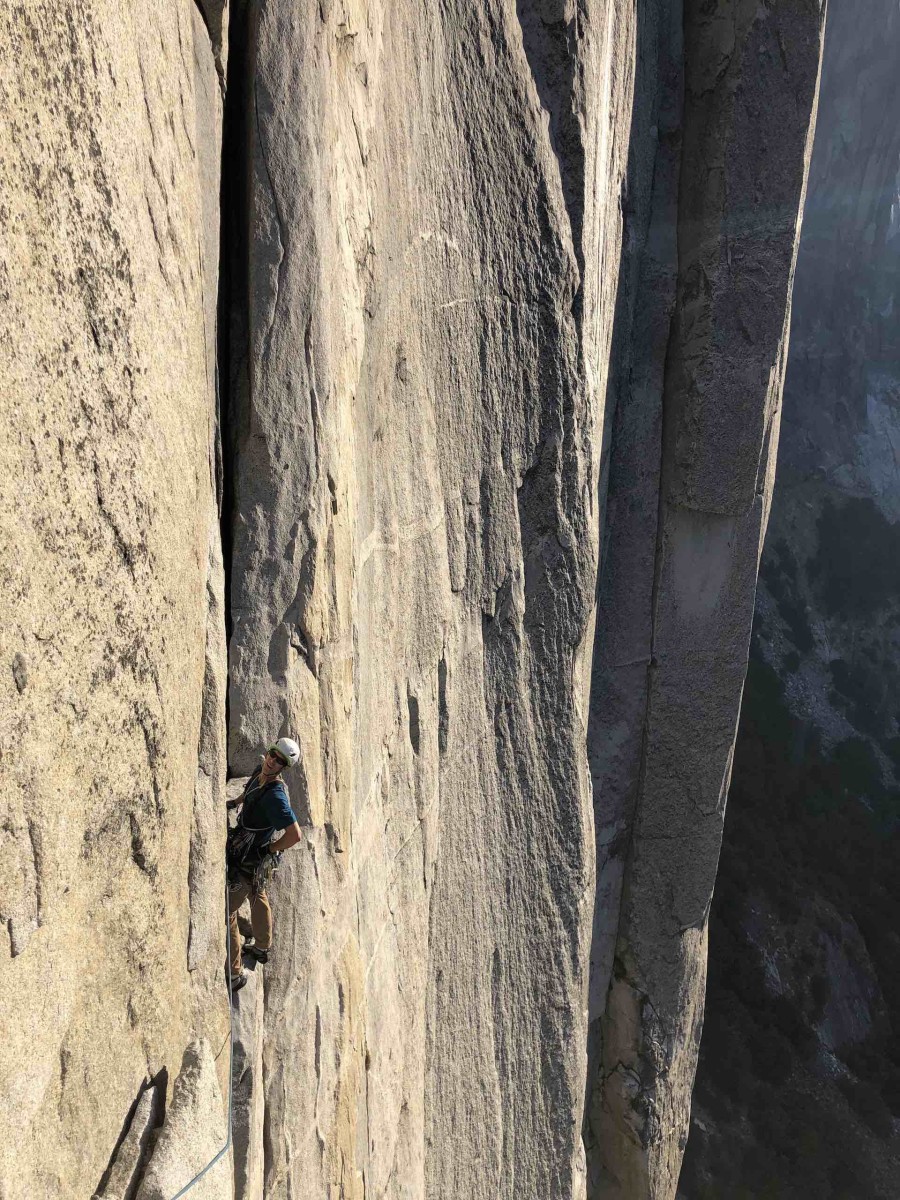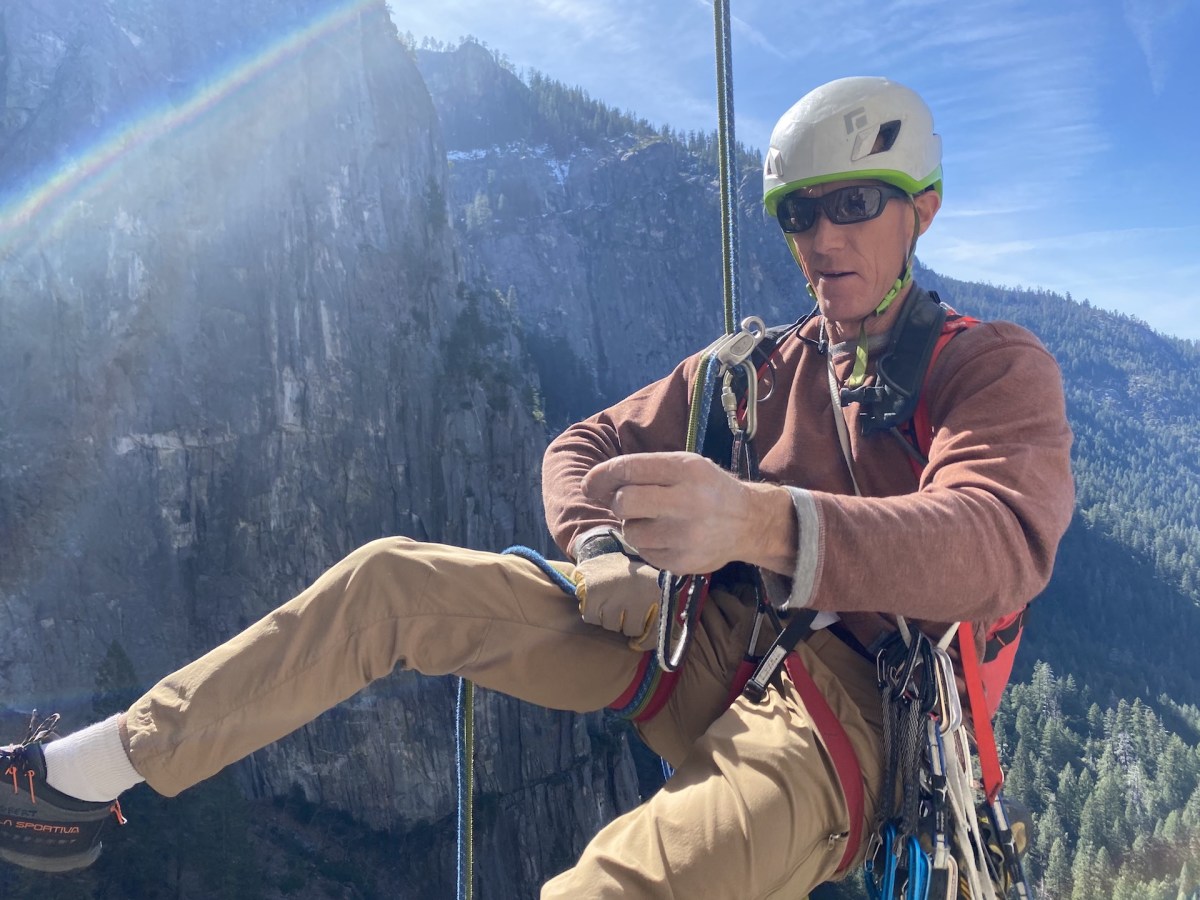“He was as sick as anybody could get and still survive.”
That was how Tom Herbert, M.D., explained the situation to KTVN 2 News after recently discharging a COVID-19 patient who had spent 29 days on a ventilator, kept in a coma while receiving a potentially life-saving plasma donations and breakthrough therapy treatments. Staff, visitors and reporters alike at Renown Health in Reno, NV, lined the halls and applauded as the recovered patient, Austin Meegan, 24, was wheeled out of the hospital in Birkenstocks and a Yoda T-shirt, with, of course, a protective white face mask.
Before Meegan’s treatment, various news sources reported that he had a single-digit chance of survival. Fortunately, recovered patient Thomas Gibson donated his plasma full of COVID-19 antibodies, as Herbert and his staff took on the task of caring for Meegan as his primary physicians.
As if beating the odds and saving lives isn’t enough, Herbert is also a legendary second-generation Yosemite rock climber. Last October, at age 50, he climbed 3,000-foot El Capitan twice in a single day for a total of 50 pitches to celebrate 50 years. As most parties take five to seven days to make it up the wall, lapping the most famous big wall in the world is a feat done by climbing’s best, seasoned pros like Alex Honnold and Tommy Caldwell. But Herbert and partner Roger “The Animal” Putnam, no spring chickens themselves, blazed up the golden granite wall, completing the feat in just over 18 hours.

The son of Yosemite Golden Era legend TM Herbert, Herbert spent his early years sitting around a campfire in historic Camp 4, the adults around him telling stories of the vertical while he played in the dirt and dreamt about one day making it up El Cap. He’s since climbed the formation 22 times. He’s climbed the giant rock with his dad, and, separately, he’s climbed it with his son Tommy (then 17 years old). Herbert and his son have also climbed Midnight Lightning, arguably the world’s most famous boulder problem, which sits on the massive Big Columbia boulder in the center of Camp 4. Meanwhile, his 19-year-old daughter Riley also has aspirations to climb El Cap with her dad someday. She’s busy now following in his footsteps toward practicing medicine as well, just like her older brother Tommy, currently applying for medical schools.
In his younger years, Herbert dirtbagged out of the back of his truck so he could save his money, have few responsibilities and climb hard (5.14). In 1998, Climbing Magazine called him one of the sport’s up and comers. He spent his late teens and early 20s guiding for the Yosemite Mountaineering School, where he met his wife of 30 years, Sondra. After guiding, he entered medical school and has been practicing for the last 16 years. As a hospitalist physician, the primary doctor on staff, he treats heart attacks, strokes, and all of the life-threatening or severe cases that come in the door.
Catching up with Herbert, he pointed out a central irony of living the full life of a legendary climber and now caring for hospital patients with COVID-19.
“As I get older,” Herbert says, “I have been doing less risky climbing, but now my job puts me at much higher chance of harm than climbing does.”

Name: Tom Herbert, M.D.
Title: Hospitalist physician, Yosemite climber
Location: Reno, Nevada, Yosemite West, California
MJ: What’s an average day of work like?
TOM HERBERT: It’s seven, 12-hour shifts followed by seven days off. During my work week, to stay fit, I run a minimum of 50 flights of stairs per day. Two days a week I lift after work. Before COVID-19 closed the gyms, three days a week after work I’d climb.
How does treating COVID-19 patients compare to climbing dangerous routes?
Caring for COVID-19 patients takes an emotional toll. It’s comparable to run-out routes (where falls are big and there’s risk of injury or death). You might be fine, or you might not.
What are some treatments for the novel coronavirus?
Right now, in our treatment options, one of them is convalescent antibodies plasma. Another is the drug Remdesivir and another is the drug Tocilizumab as well as intravenous steroids. Hydroxychloroquine wasn’t as helpful as we thought it would be. We only have few medications and mostly supportive care.
Ultimately, we don’t have a good treatment for COVID-19 yet. We have all these things that work to some degree, and by stacking these therapies [together] these medications might improve someone’s chances of survival.
Is there hope?
There has been a slowdown in the last week to two weeks, at our hospital. We’re starting to taper down the number of admissions.
— See our full series of Neighborhood Heroes, profiling the good Samaritans doing thankless work next door. We raise our glasses to all the local heroes on the front lines—from all the hospital workers to the grocery stockers, postal workers, small business owners, plus those delivering goods to the elderly and at-risk, #weoweyoudrink.
from Men's Journal https://ift.tt/2zbt2II
No comments:
Post a Comment